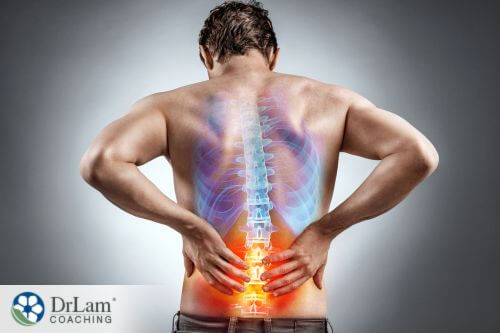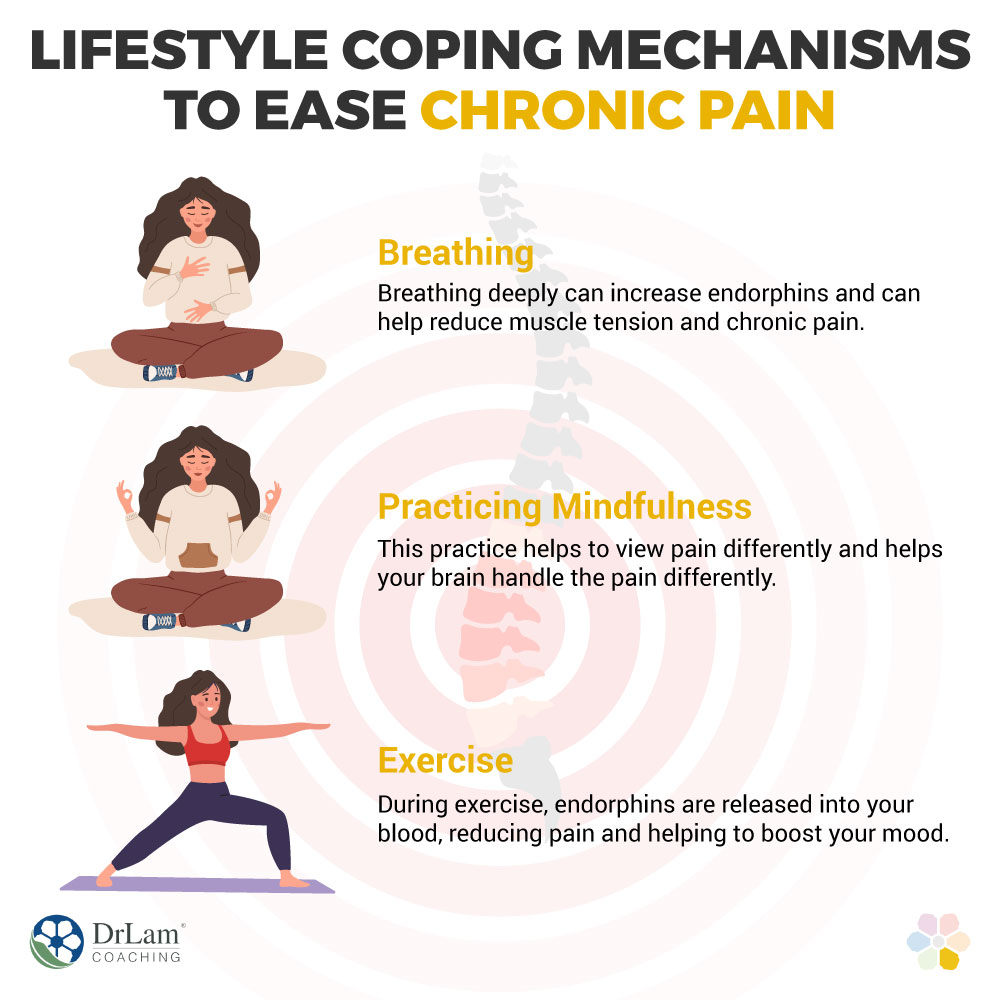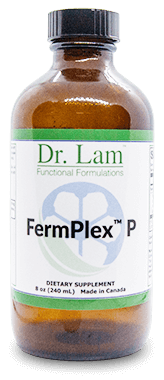 Pain is something that everyone has experienced in their life. For many, this pain is short-term and will eventually disappear. But in other cases, this pain is chronic. Chronic pain is defined as pain that lasts for over three months. Chronic pain affects 50.2 million individuals in the US, 20.5% of individuals (1). This pain can be debilitating and reduce your quality of life mentally, emotionally, and physically.
Pain is something that everyone has experienced in their life. For many, this pain is short-term and will eventually disappear. But in other cases, this pain is chronic. Chronic pain is defined as pain that lasts for over three months. Chronic pain affects 50.2 million individuals in the US, 20.5% of individuals (1). This pain can be debilitating and reduce your quality of life mentally, emotionally, and physically.
While chronic pain is debilitating, there are coping strategies to ease chronic pain. This article will explore what chronic pain is, these coping strategies, and how they help.
It is important to define what pain is, as chronic pain can become so integrated into your life that it may seem normal. Pain includes a variety of different sensations, and will be different for everyone. The most common sensations that are experienced with pain include:
Chronic pain can wreak havoc on your life. It can cause frequent absent days from work, reduce the length of time that you can work, and can cause early retirement. Mentally and emotionally, living with chronic pain can result in depression, anxiety, and mood swings.
It also can increase the burden on those around you and result in mental and emotional challenges in these individuals as well.
If you are experiencing chronic pain, visiting your healthcare provider can help to provide some answers. Typically, your healthcare provider will ask where the pain is, how long it has been occurring, and will ask you to rate your pain on a scale of zero to ten.
In terms of assessing what is causing the chronic pain, your healthcare provider may ask for a history of injury or surgeries if they do not know these already. After a history, certain tests such as blood and urine tests, x-rays, CT, and MRI scans may be done to determine the cause.
A survey in 2019 focusing on chronic pain found that the most common location of chronic pain in individuals was pain in the:
The top causes of this pain was from:
One cause of chronic pain is an increase in inflammation in the body. The NeuroEndoMetabolic (NEM) Stress Response System helps your body manage stressors. It consists of six circuits of related organ systems. One of these circuits is the inflammation circuit which helps to regulate inflammation in your body. Your immune system, gastrointestinal tract, and microbiome are the organs in this circuit that regulate inflammation.
 Inflammation is part of your body's natural defense mechanism. However, if there is an imbalance in this circuit, it can cause an increase in inflammation, which can cause an increase in pain. Adrenal Fatigue Syndrome (AFS) is the non-Addison's form of adrenal dysfunction, where the body's stress response cannot keep up with life's chronic stressors. When this happens, imbalances in the inflammation circuit can occur, and this can then result in an increase in pain.
Inflammation is part of your body's natural defense mechanism. However, if there is an imbalance in this circuit, it can cause an increase in inflammation, which can cause an increase in pain. Adrenal Fatigue Syndrome (AFS) is the non-Addison's form of adrenal dysfunction, where the body's stress response cannot keep up with life's chronic stressors. When this happens, imbalances in the inflammation circuit can occur, and this can then result in an increase in pain.
Interestingly enough, pain also has an effect on your adrenal glands. Pain stimulates your body to produce additional hormones from your adrenal glands, thyroid, and gonads. These hormones include the stress hormone cortisol (2). Chronic pain can cause this hormone to become chronically high, causing extra strain on your body and resulting in AFS. Finding relief from chronic pain will therefore help to regulate your body's response to it and reduce further strain on your body.
With the negative effects that chronic pain can cause, it is important to look at what you can do to ease chronic pain in your life. The most well-known coping mechanism to ease chronic pain is the use of conventional medications. However, there are natural coping mechanisms that can also be effective in easing chronic pain.
You may not be aware of it, but when you experience pain, your breathing can change to shallow breathing, through the mouth rather than the nose, or you may start holding your breath for long periods during bouts of intense pain.
Breathing more deeply can help regulate pain in a number of ways. Firstly, it helps regulate your heart rate and blood pressure which can help to regulate the pain response. Diaphragmatic breathing is deep breathing that comes from the diaphragm (a muscle below your lungs) and not just your chest. This form of breathing helps to relax the muscles that often tense up with pain, which can worsen the pain.
Breathing deeply or practicing breathing exercises such as box breathing can also help to release endorphins. Endorphins are "feel-good hormones" as they can improve your emotional health and make you feel better. Endorphins can help to manage chronic pain by blocking the nerve cells from receiving pain signals. This helps to reduce the overall pain experienced.
Being mindful of whether you breathe through your nose or mouth can also help. Nostril breathing helps to slow your breathing down and also activates the parasympathetic nervous system that puts you in "rest and digest" mode. This can help to relax your body, reduce muscle tension, and reduce chronic pain.
Mindfulness is one field of study that is becoming popular to ease chronic pain. This practice helps to view pain differently and helps your brain handle the pain differently.
When experiencing pain, it's easy to forget that the pain that you are currently experiencing is only one sensation and that you, as a whole, are not pain. To help view your pain as a sensation you can:
 Be mindful of your breath
Be mindful of your breathIt's easy to get caught up in negative thoughts during chronic pain. Challenging and changing these thoughts can help you to change your perspective on challenging parts of your life. This includes:
During pain, it's easy to focus on the negative rather than the positive. Focusing on the positive events in life helps your body make the feel-good endorphins which naturally can help to ease chronic pain. In this exercise:
While you may think that exercise should be avoided with chronic pain, it may help. During exercise, endorphins are released into your blood, reducing pain and helping to boost your mood. In the case of chronic pain brought on by injuries, exercise can strengthen weak muscles, preventing the chance of the injury reoccurring. However, if you are looking to exercise to ease chronic pain from an injury, it is important to get guidance from a professional who is trained in this field.
Note, if you are currently experiencing AFS, avoid vigorous exercises as this may put extra strain on your body. Rather, do gentle exercises such as yoga which will help relax your nervous system.

Omega-3 is a fatty acid that is found in oily fish such as salmon and sardines as well as plant-based sources such as chia and flax seeds. This fatty acid helps to reduce inflammation as well as pain. A Western diet is typically low in this nutrient, and this can lead to low levels of omega-3 within the body. The recommendation for omega-3 is 2-3 servings of fish a week. Plant-based sources are also a source of omega-3. However, they are not as usable for the body.
If you don't have access to fish or don't like the smell or taste, omega-3 supplementation can come in handy. These supplements are available in capsule or liquid form and contain this fatty acid and, depending on the brand, sometimes additional nutrients. Capsules are the most common form of omega-3 supplement, although can be a hindrance to some, due to the large size of the capsule. Liquid OM-3 is one example of an omega-3 supplement that is available in liquid form. Rather than a fishy taste, this supplement has a natural lemon flavor to it, and it contains a high dose of 3000mg of omega-3.
 There are a range of nutrients that act as antioxidants. These include:
There are a range of nutrients that act as antioxidants. These include:
Antioxidants help to neutralize unstable molecules (free radicals). These free radicals are produced due to illness, pollutants, and stress and can increase inflammation in the body, thus increasing chronic pain. Antioxidants can help to reduce inflammation and help to also prevent future damage from free radicals. This can indirectly help to ease chronic pain.
Nutrients can help to ease chronic pain. However, there are also active compounds available in herbs and spices that can help to ease chronic pain. These include:
Turmeric is considered nature's pharmacy in Aryuvedic medicine, a form of ancient Indian healing. One of the compounds that may help give turmeric this name is curcumin. Curcumin is a polyphenol and has anti-inflammatory as well as antioxidant properties (3).
Ginger is another herb that can help to reduce pain. It has multiple compounds in it that can assist with easing chronic pain. These include antioxidants such as gingerols as well as salicylates that convert into salicylic acid. This prevents your body from making prostaglandins and, as a result, reduces pain. Studies on the use of ginger have shown it to be beneficial in reducing pain. However, more research is necessary (4).
These herbs and spices are popular in cooking. However, there are limitations to how much you can have, as large quantities in food will overpower the meal. Additionally, some of the beneficial properties found in these herbs and spices are reduced during the cooking process. Supplementation is one alternative that can help to improve the bioavailability of herbs and spices, allowing for more beneficial effects. It also allows for more medicinal quantities to be used.
FermPlex P is a supplement that includes turmeric, ginger, oregano, and lavender. This supplement is a fermented product in liquid form. The fermentation of the product improves the bioavailability of the herbs and spices allowing for more of the beneficial effects to be available to your body. The combination of ingredients used in FermPlex P helps to make it effective to ease chronic pain.
Chronic pain is a debilitating symptom that many people deal with. Not only does it affect your mental health but it also increases the strain on your body. However, strategies to ease chronic pain are available and can help to improve the pain and the quality of your life. These strategies include:
If you are currently experiencing pain for long periods of time, the team at Dr. Lam can assist you in your health journey. You can call us at +1 (626) 571-1234 or click here for a free initial consultation.

Discover soothing relief with FermPlex P today!
Yong, R. J., et al. “Prevalence of Chronic Pain Among Adults in the United States.” Pain, vol. 163, no. 2, 2022, pp. 328-332, https://pubmed.ncbi.nlm.nih.gov/33990113/.
Tennant, F. “The Physiologic Effects of Pain on the Endocrine System.” Pain Ther., vol. 2, no. 2, 2013, pp. 75-86, https://www.ncbi.nlm.nih.gov/pmc/articles/PMC4107914/#:~:text=Pain%20initially%20stimulates%20the%20HPATG,adrenals%2C%20gonads%2C%20and%20thyroid.
Hewlings, S. J., and D. S. Kalman. “Curcumin: A Review of its Effects on Human Health.” Foods, vol. 6, no. 10, 2017, p. 92, https://www.ncbi.nlm.nih.gov/pmc/articles/PMC5664031/.
Rondanelli, M., et al. “Clinical Trials on Pain Lowering Effect of Ginger: A Narrative Review.” Phytother Res., vol. 34, no. 1, 2020, pp. 2843-2856, https://www.ncbi.nlm.nih.gov/pmc/articles/PMC7754412/.
If the cause of your chronic pain is due to an imbalance within your inflammation circuit, then healing from AFS may help to ease chronic pain. However, if your chronic pain is from another cause, reducing stress and AFS may provide relief from pain, but it won't stop it permanently.